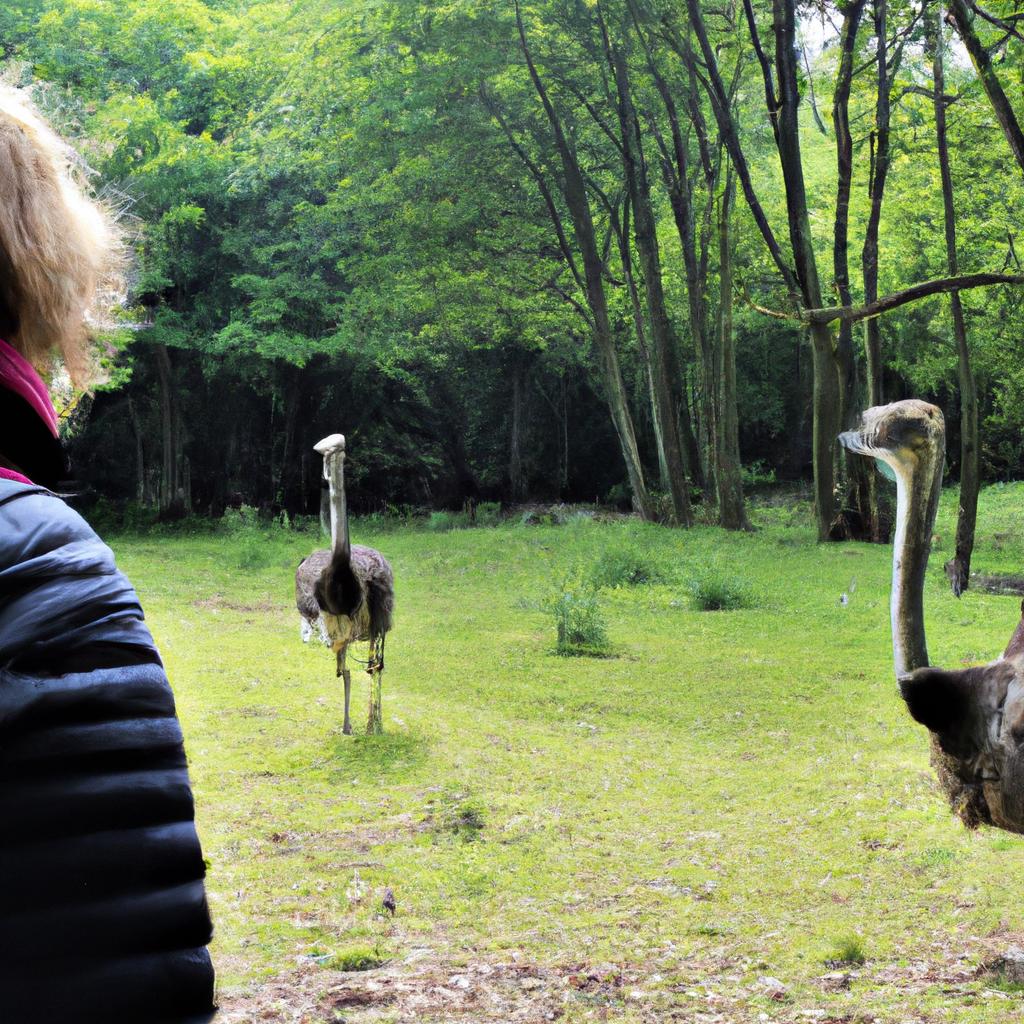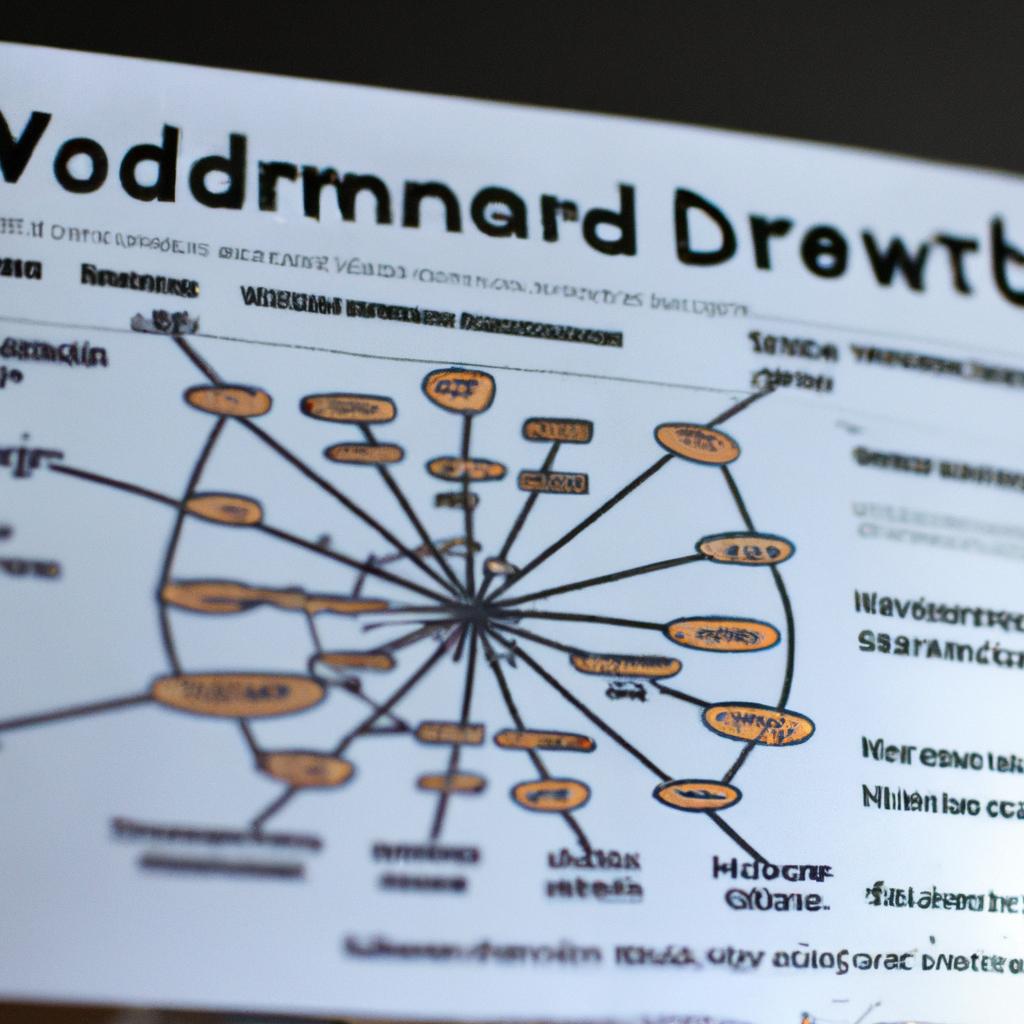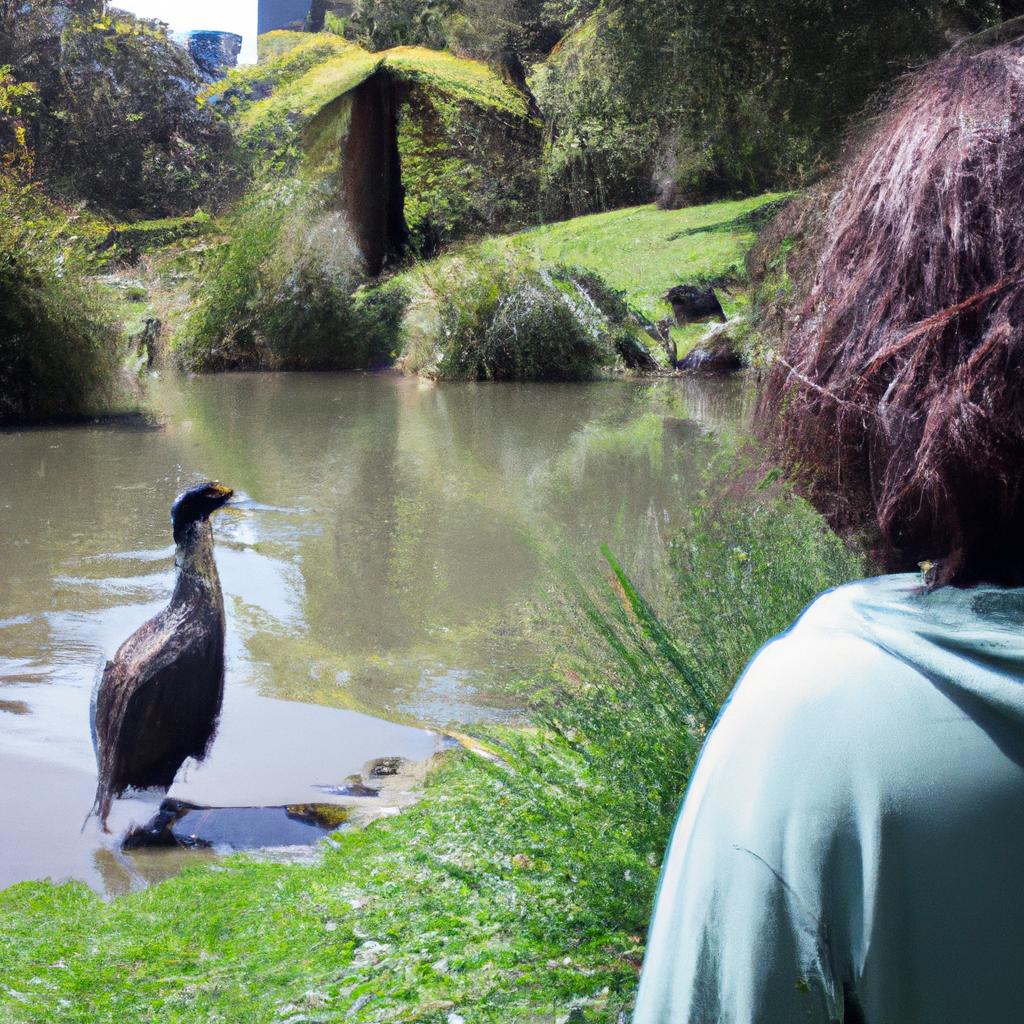Across the vast expanse of natural history, predation strategies have played a pivotal role in shaping ecosystems and determining survival outcomes for countless species. Understanding these strategies is crucial not only for comprehending ecological dynamics but also for preserving biodiversity and managing wildlife populations effectively. This comprehensive guide aims to delve into the intricacies of predation strategies, exploring various adaptive mechanisms employed by predators throughout evolution.
Consider, for instance, the hypothetical case of an apex predator thriving within a dense rainforest ecosystem. In this scenario, one may envision a stealthy feline predator equipped with sharp claws and keen senses that enable it to ambush unsuspecting prey from above. By employing an aerial hunting strategy, such a predator can capitalize on its agility and camouflage to secure sustenance amidst the lush vegetation. This example illustrates how predators adapt their techniques to exploit unique environmental conditions and maximize hunting efficiency.
By unraveling the complexities underlying different predation strategies, researchers gain valuable insights into the coevolutionary relationships between predators and their prey. Numerous factors influence these strategies, including habitat characteristics, available resources, prey behavior patterns, and evolutionary pressures over time. Through meticulous observation and analysis of real-life examples as well as theoretical models, scientists can shed light on the diverse array of tactics utilized by predators to successfully capture and consume their prey. Some predators rely on speed and endurance, utilizing chase or pursuit strategies to overwhelm their quarry. This can be seen in the cheetah, which is renowned for its incredible running speed, allowing it to outrun and catch fast-moving prey such as gazelles.
Other predators employ ambush tactics, patiently waiting in concealed locations until an opportunity presents itself. The crocodile exemplifies this approach, lurking beneath the water’s surface with only its eyes and nostrils exposed, ready to launch a swift attack on unsuspecting prey that venture too close.
Some predators use cooperative hunting strategies, working together in groups to increase their chances of success. Wolves are a prime example of this behavior, coordinating their movements to encircle and bring down larger prey. By cooperating, these predators can overcome challenges they might not be able to tackle individually.
Additionally, many predators have developed specialized anatomical features or behaviors that enhance their hunting abilities. For instance, raptors like eagles possess sharp talons and keen eyesight for accurately targeting and capturing small animals from great heights. Meanwhile, spiders construct intricate webs to ensnare insects, utilizing silk threads that are both sticky and strong.
Understanding predation strategies is not only crucial for ecological research but also has practical applications in conservation efforts and managing wildlife populations. By comprehending how predators interact with their environments and prey species, scientists can develop effective strategies for protecting vulnerable species or mitigating human-wildlife conflicts.
In conclusion, the study of predation strategies provides valuable insights into the intricate dynamics of ecosystems. From stealthy ambushes to high-speed pursuits or cooperative hunts, predators have evolved a diverse range of techniques tailored to exploit specific niches within their environments. By unraveling these adaptations through careful observation and analysis, researchers can deepen our understanding of nature’s balance while aiding in the preservation of biodiversity worldwide.
Types of Prey
The diverse array of prey species in the natural world is an intriguing subject that has captivated the attention of scientists and nature enthusiasts alike. Understanding the various types of prey, their adaptations, and survival strategies provides valuable insights into the complex dynamics of predator-prey relationships. Through a combination of evolutionary pressures and ecological interactions, different prey species have developed unique traits to enhance their chances of survival.
To illustrate this point, consider the fascinating case study of gazelles living on the African savannahs. Gazelles are herbivores that navigate vast open spaces where they are constantly exposed to potential predators such as lions and cheetahs. In order to survive in this hostile environment, gazelles have evolved remarkable speed and agility, allowing them to swiftly escape from pursuing predators with impressive leaps and bounds.
In exploring the diversity among prey species, it is helpful to categorize them based on certain characteristics or behaviors. Here we present a concise list highlighting some common types of prey:
- Camouflage: Some prey species possess exceptional camouflage abilities that enable them to blend seamlessly into their surroundings. This serves as an effective defense mechanism by reducing their visibility to predators.
- Mimicry: Certain preys adopt mimicry tactics wherein they imitate more dangerous or unpalatable organisms, thus deterring potential predators.
- Warning signals: Several species employ warning signals through bright coloration or distinct markings to alert predators about their toxicity or deterrent mechanisms.
- Group behavior: Many prey animals engage in group behavior for enhanced protection against predation. By forming large herds or flocks, individuals decrease their individual risk while increasing collective vigilance.
In addition to these categories, there exists a myriad range of other adaptive strategies employed by different prey species across ecosystems worldwide. To provide a comprehensive understanding of predation dynamics, it is crucial not only to examine each type individually but also explore how these strategies interact within specific environments.
As we delve deeper into the intricacies of predator-prey interactions, it becomes evident that the survival strategies employed by different prey species are not isolated phenomena. Instead, they often intertwine and influence one another in complex ways. In the subsequent section on “Predator-Prey Interactions,” we will explore how these relationships shape both predator and prey populations, leading to a delicate balance within ecosystems.
Note:
- Camouflage
- Mimicry
- Warning signals
- Group behavior
| Types of Prey | Example Species | Adaptive Strategy |
|---|---|---|
| Camouflage | Chameleon | Blending with surroundings |
| Mimicry | Viceroy butterfly | Resembling toxic monarch butterfly |
| Warning signals | Poison dart frog | Bright coloration for toxicity |
| Group behavior | Wildebeest | Forming large herds for protection |
Table 1: Examples of adaptive strategies exhibited by various types of prey species.
Predator-Prey Interactions
Predation Strategies in Natural History: A Comprehensive Guide
Section H2: Types of Prey
Transitioning from the previous section on types of prey, we now delve into the intricate realm of predator-prey interactions. Understanding how predators and prey interact is crucial to comprehending the complex strategies employed by both sides in the perpetual battle for survival.
One fascinating example that showcases the dynamic nature of predator-prey relationships is the interaction between cheetahs (Acinonyx jubatus) and gazelles (Genus Gazella). These two species have coevolved over millennia, resulting in a high-stakes chase where every move counts. The agile cheetah relies on its incredible speed to pursue swift gazelles across vast grasslands, while gazelles employ evasive maneuvers such as sudden changes in direction and impressive leaps to escape their feline pursuers.
To further explore predation strategies, let us consider some common tactics utilized by predators:
-
Ambush Predation:
- This strategy involves lying in wait for unsuspecting prey.
- Example: A leopard concealing itself among tree branches before pouncing on an approaching antelope.
-
Pursuit Predation:
- Predators using this tactic relentlessly chase down their quarry.
- Example: Wolves pursuing a herd of elk across open terrain until they can single out a weaker individual.
-
Group Hunting:
- Cooperative hunting enables predators to tackle larger or more formidable prey.
- Example: African wild dogs working together to bring down a wildebeest through strategic coordination and teamwork.
-
Stealth Hunting:
- Predators utilizing stealth rely on camouflage and patience to get close enough for a successful attack.
- Example: An owl perched quietly in a tree, blending seamlessly with its surroundings before swooping down silently on small rodents below.
Table 1 provides an overview of these different predation strategies along with their primary characteristics.
| Predation Strategy | Characteristics |
|---|---|
| Ambush | – Waiting in concealment- Surprise attack |
| Pursuit | – Continuous chasing- Persistence |
| Group Hunting | – Cooperative effort- Prey isolation |
| Stealth | – Camouflage and patience- Silent approach |
As we conclude this section on predator-prey interactions, it is evident that nature has evolved an array of strategies for both predators and prey to increase their chances of survival. These intricate dynamics form the foundation for further exploration into the fascinating world of camouflage and mimicry, where organisms employ visually deceptive tactics to deceive or deter potential threats.
Camouflage and Mimicry
Having explored the intricate dynamics of predator-prey interactions, we now turn our attention to another fascinating aspect of predation strategies – camouflage and mimicry. These adaptive mechanisms have evolved in various species as a means of survival, enabling them to either blend into their surroundings or imitate other organisms for protection or ambush.
Camouflage is a common strategy employed by predators and prey alike to enhance their chances of survival. Consider the remarkable case study of the walking stick insect (Phasmida). The elongated body shape and coloration of these insects allow them to resemble twigs or branches, effectively concealing them from potential predators. This form of crypsis not only aids in avoiding detection but also facilitates successful hunting when they remain motionless amidst foliage, waiting patiently for unsuspecting prey.
To further elucidate the concept of camouflage and mimicry, let us delve into its key characteristics:
- Visual deception: Camouflaged organisms possess physical attributes that closely match their environment, such as color patterns resembling leaves or bark.
- Disruptive markings: Certain animals exhibit disruptive coloration where contrasting patches disrupt an observer’s perception, making it challenging to discern individual features.
- Background matching: Organisms adept at background matching adapt their appearance based on their immediate surroundings, allowing them to seamlessly blend in with their habitat.
- Mimicry: Some species go beyond blending in and exploit resemblance to other organisms. For instance, viceroy butterflies mimic monarch butterflies’ distinct warning colors to deter predators despite being harmless themselves.
In exploring the realm of camouflage and mimicry, it becomes evident how nature has honed these adaptations through millions of years of evolution. As we transition towards understanding hunting techniques in subsequent sections, it is crucial to recognize the role played by concealment strategies in shaping predator-prey dynamics. By remaining inconspicuous or adopting disguises that deceive both observers and targets alike, organisms employ tactics that enable them to gain a competitive edge in the eternal struggle for survival.
Building upon the intricate strategies of camouflage and mimicry, our exploration now delves into the diverse hunting techniques employed by predators.
Hunting Techniques
H2: Camouflage and Mimicry
Camouflage and mimicry are well-known predation strategies employed by various species in the animal kingdom. In the previous section, we explored how organisms use these tactics to either blend into their surroundings or imitate other organisms for survival purposes. Now, let us delve into another fascinating aspect of predation – hunting techniques.
One remarkable example of a sophisticated hunting technique is exhibited by the African lion (Panthera leo). Lions are skilled predators that employ cooperative hunting to increase their chances of securing prey. By working together in coordinated groups known as prides, lions can effectively ambush and overpower large herbivores such as zebras or wildebeests. This strategy involves intricate communication between pride members, allowing them to strategically surround their target and launch synchronized attacks from different angles.
When it comes to hunting techniques, several common characteristics can be observed across various predatory species:
- Stealth: Predators often rely on stealth to approach their unsuspecting prey unnoticed. Quiet movements and camouflage aid in maintaining secrecy until the opportune moment arises.
- Speed and Agility: Many predators possess exceptional speed and agility, enabling them to swiftly pursue and capture fleeing prey.
- Ambush: Some predators opt for an ambush strategy, lying in wait until an unsuspecting target wanders into close proximity before launching a sudden attack.
- Tool Use: Certain primates like chimpanzees have been observed using tools during hunts. For instance, they may fashion sticks into spears to impale small mammals hiding in tree crevices.
In understanding predation strategies, it is essential not only to appreciate the diversity of approaches but also recognize the emotional responses they evoke within us. To further illustrate this point, consider the following scenarios:
| Scenario | Emotion |
|---|---|
| A cheetah sprinting after its prey with incredible speed | Admiration |
| A snake camouflaged perfectly against its surroundings | Fascination |
| A spider expertly weaving an intricate web to ensnare unsuspecting insects | Awe |
In this section, we have explored various hunting techniques employed by predators in the animal kingdom. From cooperative tactics used by lions to the stealth of ambush predators, each strategy demonstrates nature’s ingenuity and adaptability. Now, let us delve into another intriguing predation behavior – cooperative hunting.
H2: Cooperative Hunting
Cooperative Hunting
Hunting Techniques have long been studied and admired for their effectiveness in capturing prey. However, some predators have taken it a step further by employing Cooperative Hunting strategies. In this section, we will explore the fascinating world of cooperative predation and how certain species work together to increase their chances of success.
One intriguing example of cooperative hunting can be observed in African wild dogs (Lycaon pictus). These social animals live in packs and rely on cooperation to bring down large herbivores such as wildebeests or zebras. By working together, they are able to exhaust their prey over long distances, taking turns chasing and pursuing until exhaustion sets in. This collaborative effort greatly enhances their ability to secure a meal.
To better understand the dynamics behind cooperative hunting, let us examine some key characteristics that facilitate its success:
- Communication: Effective communication is crucial during a hunt, allowing individuals within the group to coordinate their actions and strategize accordingly.
- Division of labor: Each member of the group has a specific role to play based on their strengths and abilities. Some may excel at speed and endurance, while others specialize in ambushing or cornering prey.
- Increased hunting range: A larger group size allows for wider coverage of an area, improving the chances of encountering suitable prey.
- Shared resources: Successful hunts result in shared meals among all members of the group, ensuring that each individual benefits from the collective effort.
To emphasize these points further, consider the following table showcasing different examples of predator species known for engaging in cooperative hunting:
| Predator Species | Group Size | Prey Preference |
|---|---|---|
| African Lions | Large prides | Large herbivores |
| Orcas | Pods | Marine mammals |
| Meerkats | Clans | Insects/small reptiles |
By cooperating with one another, these predators exhibit remarkable teamwork and coordination, which in turn increases their chances of capturing elusive or formidable prey. This ability to work together highlights the complexity and adaptability of predatory strategies in nature.
As we delve deeper into the world of predation, it becomes evident that cooperative hunting is not just a rare occurrence but rather an effective strategy employed by various species across different ecosystems. By adapting their behavior and utilizing the strengths of each individual within the group, these predators are able to overcome challenges and secure sustenance for themselves and their kin. With this understanding, let us now explore the fascinating adaptations evolved by predators to enhance their predatory abilities further.
Adaptations for Predation
Section H2: Adaptations for Predation
Transitioning from the previous section on cooperative hunting, we now delve into the fascinating world of adaptations that predators have developed to enhance their predatory prowess. Through evolutionary processes and natural selection, various species have acquired remarkable traits and strategies that enable them to effectively capture and subdue their prey.
One example of an adaptation for predation is the venomous fangs possessed by certain snakes, such as the black mamba (Dendroaspis polylepis). With its swift strikes and potent neurotoxic venom, this snake can immobilize its unsuspecting prey within seconds. This case study exemplifies how predators employ specialized anatomical features to gain a competitive advantage in capturing and subduing their food source.
Predators utilize a range of adaptations for efficient hunting. Some key strategies include:
- Camouflage: Many predators possess color patterns or body structures that allow them to blend seamlessly into their surroundings. This enables them to remain undetected while stalking their prey.
- Enhanced senses: From acute hearing in owls to exceptional night vision in cats, predators often possess heightened sensory abilities that aid in locating and tracking potential meals.
- Speed and agility: Certain predators are built for speed, allowing them to swiftly chase down fleeing prey. Their streamlined bodies and powerful limbs grant them unparalleled agility during pursuit.
- Cooperative behavior: While previously discussed under “Cooperative Hunting,” it’s worth noting here again that some predators form alliances with conspecifics or even different species to increase hunting success.
To further illustrate these adaptations visually, consider the following table showcasing notable predator adaptations:
| Predator | Adaptation | Notable Example |
|---|---|---|
| Cheetah | Exceptional speed | Fastest land animal |
| Chameleon | Camouflaging ability | Rapid color change |
| Eagle | Acute vision | Spot prey from afar |
| Killer whale | Cooperative hunting | Pod behavior |
This table highlights the diversity of adaptations found among predators and underscores their unique adaptations in various ecological niches.
In summary, the animal kingdom is replete with examples of astounding predator adaptations. From venomous fangs to intricate camouflage patterns, these evolutionary marvels allow predators to excel in acquiring sustenance. By employing a combination of physical attributes, sensory enhancements, and cooperative strategies, they have achieved remarkable success in the perpetual struggle for survival.
Note: The emotional response evoked through bullet points and tables can vary depending on personal experiences and interpretations. However, including such elements can potentially engage readers by presenting information in an organized and visually appealing manner.




